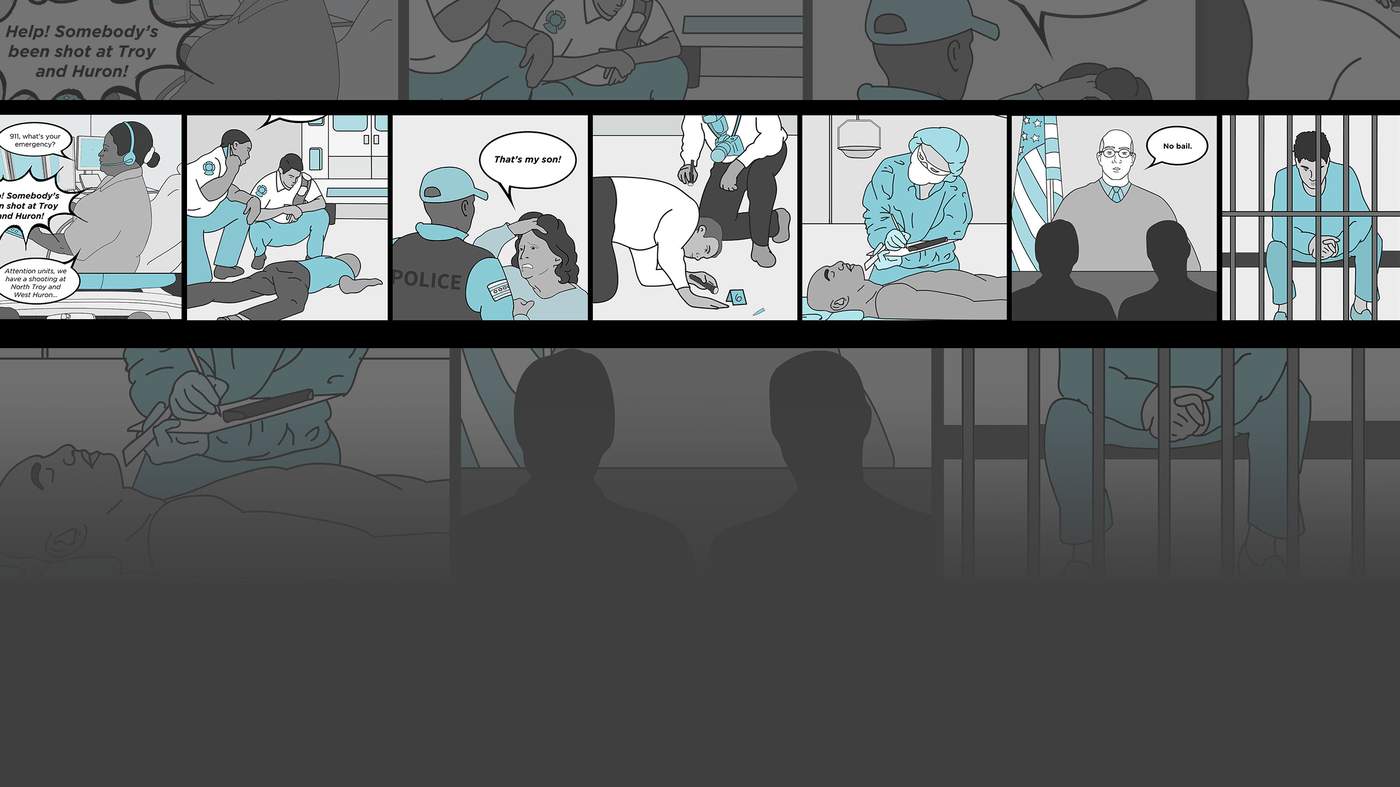When a person is shot and killed in Chicago, what happens afterward?
That’s a question we heard often at community conversations WBEZ held as part of our ongoing project about Chicago gun violence.
How are shootings investigated in Chicago? Who is involved? How do you get from a crime to a conviction — or not?
This illustrated explainer sheds some light on those questions. It takes a hypothetical fatal shooting and outlines major steps in the investigation, from the time 911 is called to just before the suspect goes to trial.
Because we wanted to take you through all those steps, the scenario we’re depicting is both based on actual cases and in some sense an “idealized” case. In the vast majority of homicides no one is ever arrested.
When someone calls 911 to report a shooting, a dispatcher asks for the location.
The dispatcher assigns officers — often the closest patrol car — and paramedics to the scene.
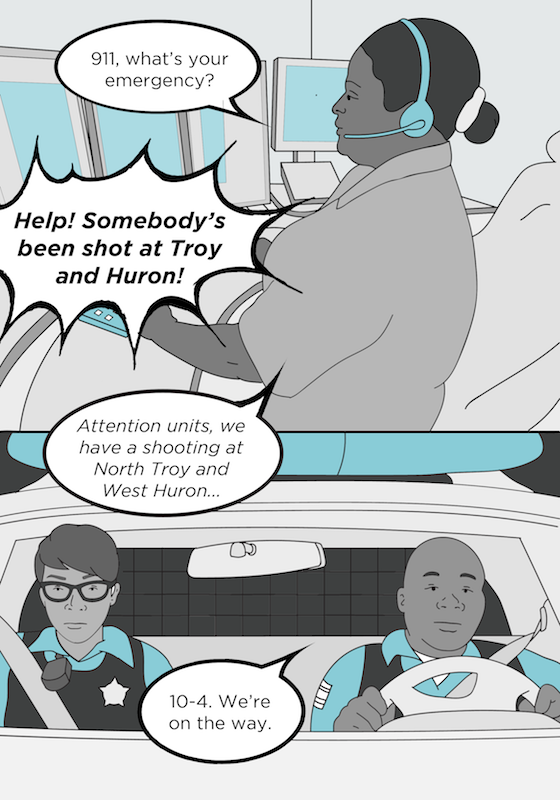
If the victim is alive, paramedics perform life-saving procedures.
If the victim is dead, a paramedic will call an ER doctor, who will officially “pronounce” the victim dead.
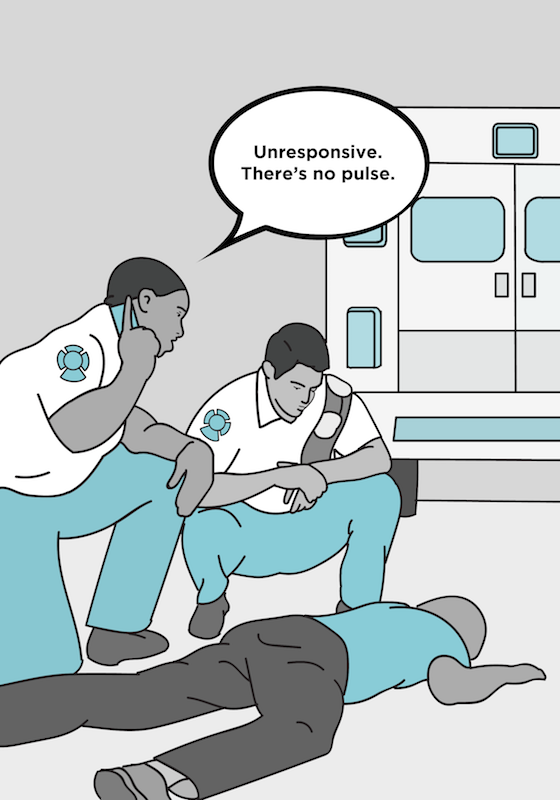
The police officers’ job is to keep everything as close as possible to the way it was when the crime occurred.
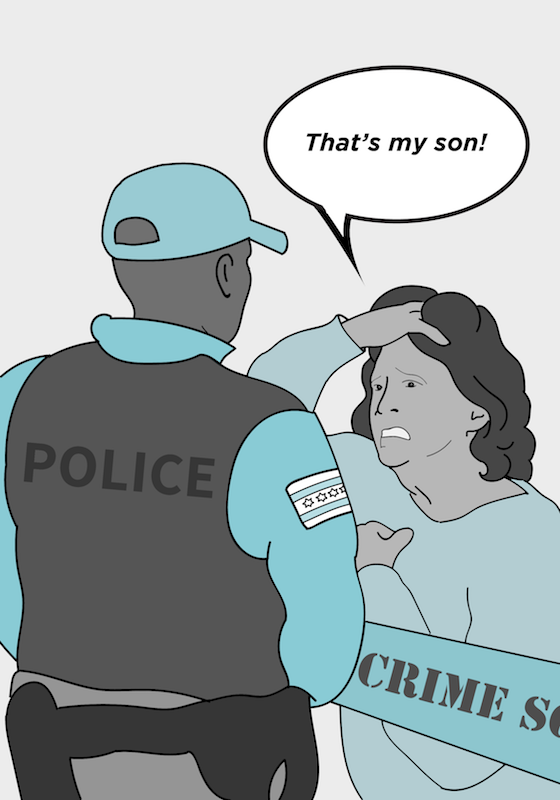
Evidence technicians are responsible for documenting the scene with notes, photos, and sometimes videos.
They also collect evidence, which may include things like shell casings, and information like the angle at which the victim fell after being shot.
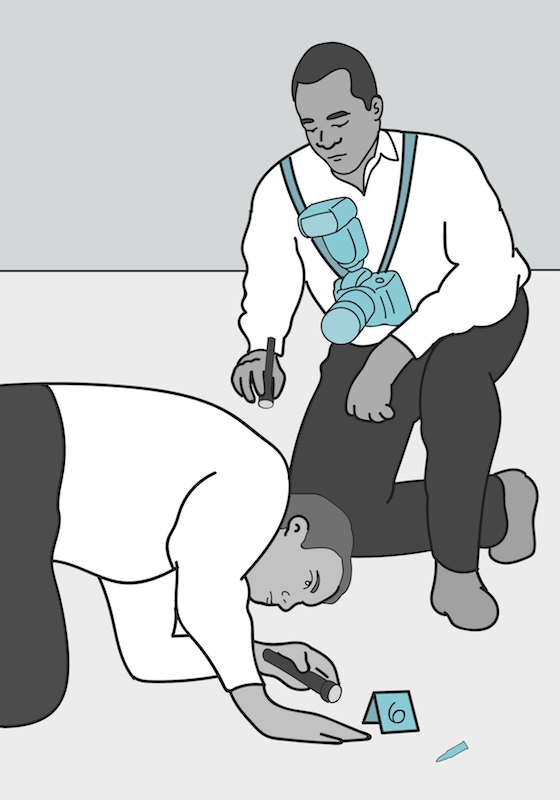
Meanwhile, the detectives interview witnesses.
Surveillance video, if it exists, can be powerful evidence. But detectives still need witnesses who can identify the people in the video and corroborate what happened.
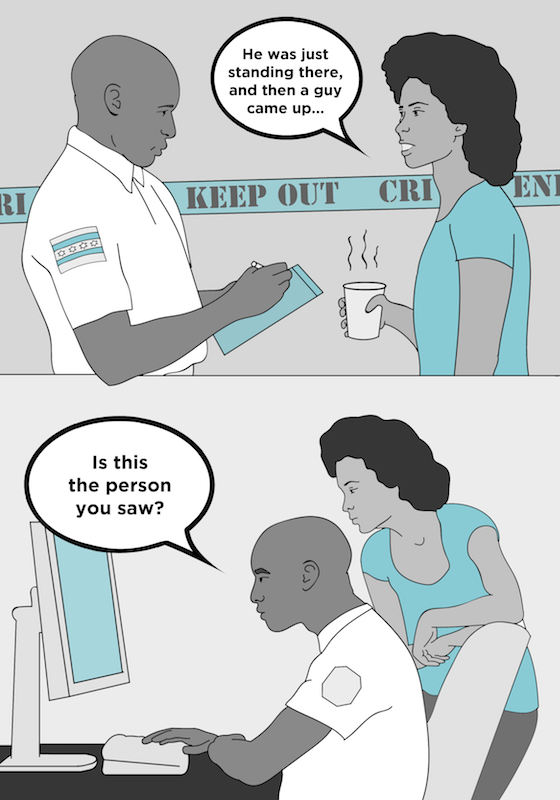
A body removal service takes the victim to the Cook County medical examiner’s office for an autopsy. The autopsy, which is usually performed within 24 hours, confirms the cause and manner of death.
In this case, the victim died from a gunshot wound and the death was ruled a homicide.
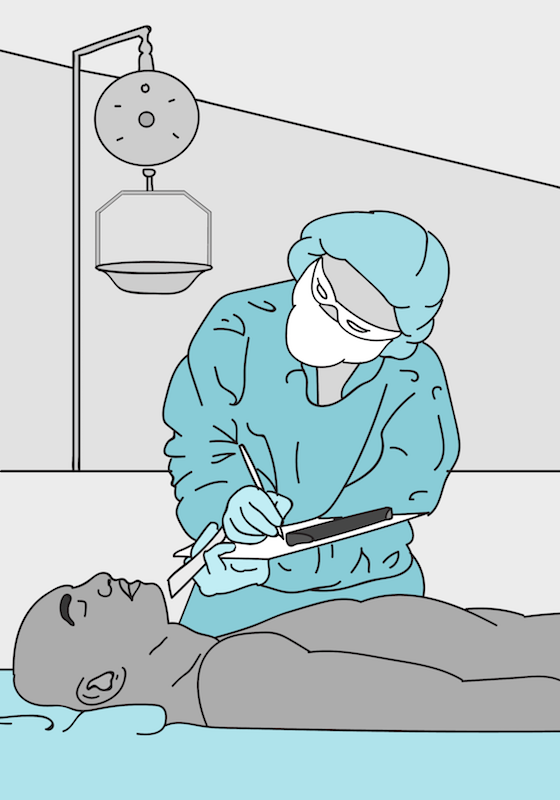
Detectives take all of that information and try to identify a suspect, which could lead to an arrest, depending on how solid the evidence is.
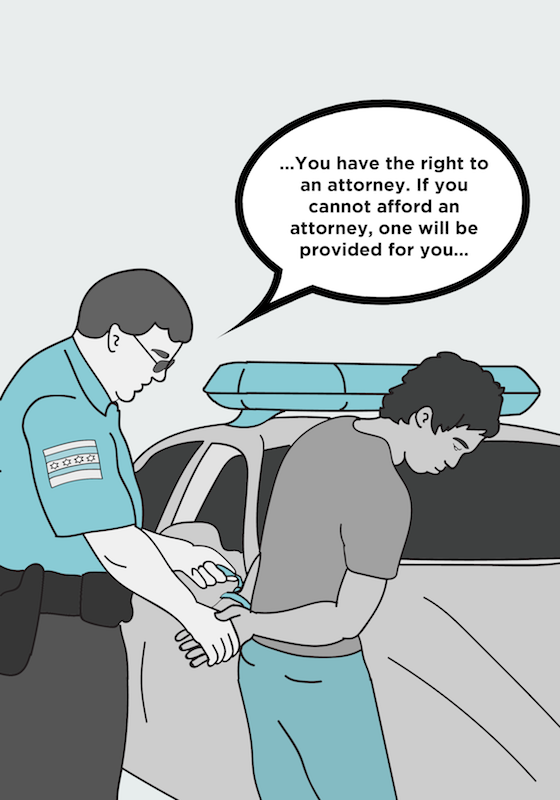
They bring the suspect in for questioning...
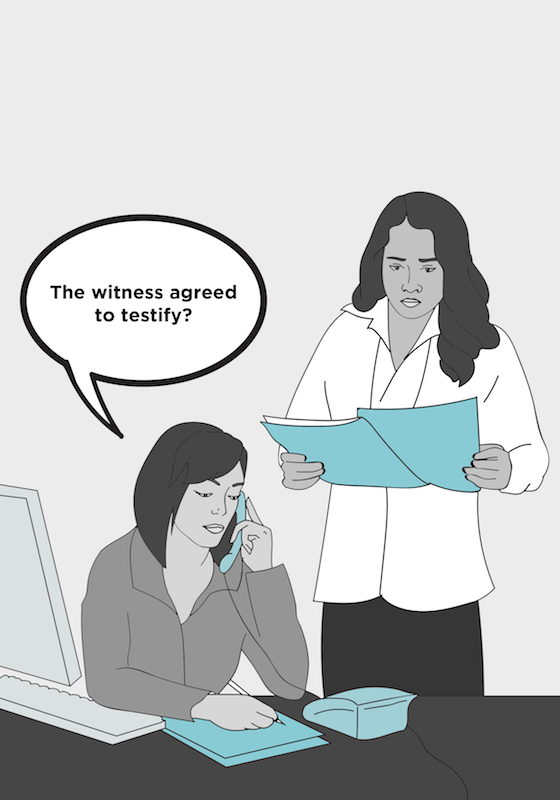
...and send the case to the state’s attorney’s office.
A division of the state’s attorney’s office called felony review looks over the case and decides whether they believe it’s strong enough to get a conviction.
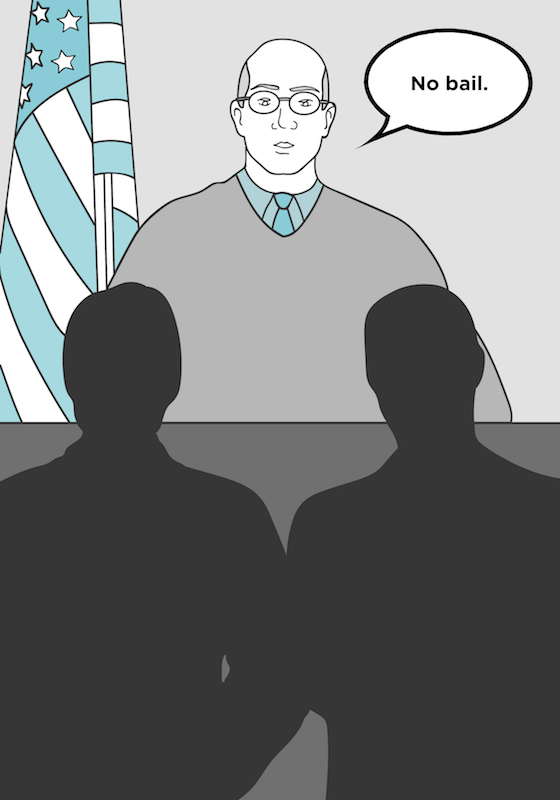
If the state’s attorney’s office decides to take the case to trial, the defendant is taken from the police department to the Cook County criminal courthouse for a bond hearing.
A judge decides whether the defendant gets bail. The defendant then awaits trial — a process that can take several years.
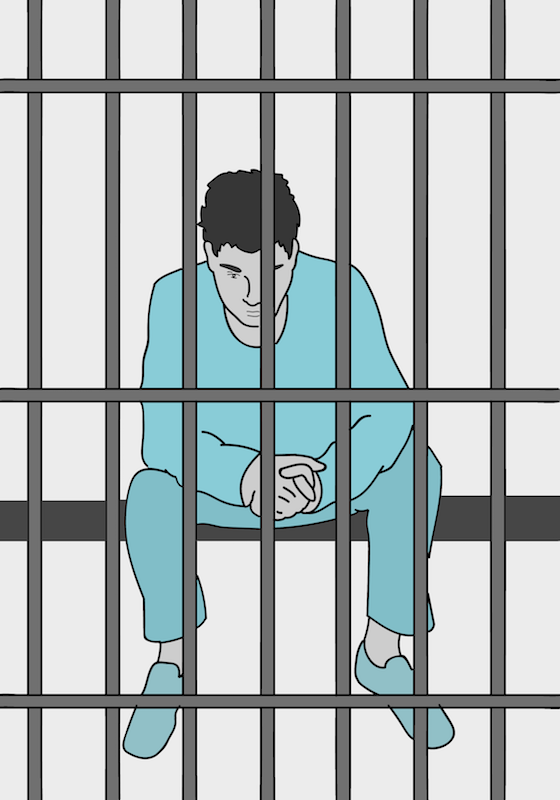
If the trial ultimately results in a conviction, that waiting period is subtracted from the sentence.
Of course, every crime and investigation is unique. Do you have ideas about steps that might be missing from our sequence here, or ones you think should be added? What other questions do you have about gun violence in Chicago? Send them to us below:
Maggie Sivit is a former production assistant for WBEZ's Every Other Hour project.She is currently a PhD candidate in Cinema and Media Studies at the University of Chicago.
Criminal justice reporting and investigative journalism at WBEZ is supported in part by Doris and Howard Conant, The Joyce Foundation and the Robert R. McCormick Foundation.

